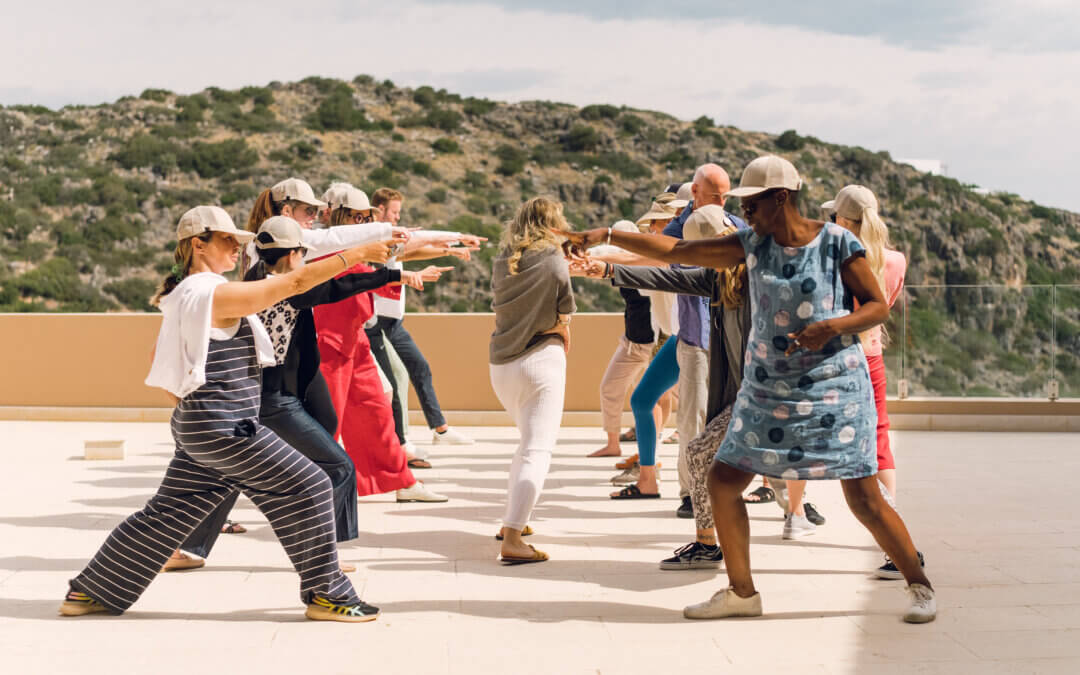In today’s fast-paced world, stress responses often go unnoticed, playing out in boardrooms, family dinners, and internal dialogues. What we often call “just the way I am” is usually a reflection of how we learned to handle pressure, modeled by those who raised us. Our reactions aren’t random; they’re rehearsed, inherited, and deeply embodied.
That’s where the Stasis–Kinesis framework comes in. This isn’t just about movement or mindfulness—it’s about deeply rooted stress responses that live in our bodies, shaped by years of observation and emotional inheritance. These patterns aren’t flaws. They’re survival strategies. Most of us didn’t choose them we inherited them.
Inherited Reactions: Where Our Stress Patterns Begin
Think about how your parents responded when they were overwhelmed. Did they withdraw in silence? Explode with frustration? Try to control everything? Or smile through it all, hoping to keep the peace?
As children, we observed these moments, and our nervous systems took notes.
Over time, these observations solidified into our own stress stances—default responses that now show up in meetings, relationships, and leadership decisions. We may not even realize we’re repeating them. But they shape how we show up every day.
These patterns are what I call Stasis—the frozen, reactive states we enter when stress takes over.
Stasis: The Survival Mode We All Know Too Well
When we experience stress, especially in relationships or high-pressure situations, we often default to one of five Surviving Stances unconscious patterns of body language and behavior we learned early in life to help us feel safe.
- Blaming: Reacts with criticism to feel in control and respected.
- Placating: Prioritizes harmony by taking all the blame.
- Super-Reasonable: Hides behind logic to avoid emotions.
- Withdrawing: Retreats for safety and emotional distance.
- Distracting: Uses humor or charm to deflect discomfort.
At the center is the Congruent Stance, a state of balanced communication where body, emotions, and thoughts are aligned. This is the goal of embodied awareness: to move from reactive patterns to authentic, grounded presence.
You can see a visual representation of these stances in the illustration below.

Kinesis: The Movement Back to Presence and Power
Kinesis is what happens when we start moving through our stress responses instead of being ruled by them.
Once we become aware of our stress stances, we can begin to shift into more empowered, connected ways of being what we call Flow States. These are not idealized versions of ourselves, but grounded, embodied responses that arise when we feel safe enough to lead from presence rather than protection.
Here’s how Kinesis might show up through what I call Flow States:
- Peaceful Warrior: Calm, clear, and grounded in conflict.
- Power Tree: Supportive and strong, with clear boundaries.
- Humble Monk: Balances logic and empathy with ease.
- World Hugger: Connected to others, centered in self.
- Core Harmonizer: Lightens tension with heart and humor.
- Congruent: Fully aligned in words, feelings, and actions.
See the visual representation of these Flow States in the image below.

The Flow Dance
We shift from Blaming to the Peaceful Warrior, transforming confrontation into clarity and grounded strength. From Placating, we rise into the Powerful Tree, standing tall in compassion without losing ourselves. From Withdrawing, we become the World Hugger, present and connected while maintaining our personal boundaries. The Distracting stance finds new expression as the Core Harmonizer, focusing on meaningful engagement. And from the logical detachment of the Super-Reasonable, we evolve into the Humble Monk, integrating intellect with heartfelt presence.
These shifts are more than symbolic. They are embodied possibilities, states we can learn to access when we bring awareness, breath, and movement into our reactions. Each stance in Stasis holds a hidden longing: for respect, connection, safety, clarity. And each flow state offers a way to meet those needs with grace, integrity, and embodied leadership.
Three Ways to Practice Stasis–Kinesis in Daily Life
- Notice Your Stress Stance
Next time you feel reactive, pause. Ask: “What’s my default here?” Awareness is the beginning of choice. - Shift Your Posture, Shift Your State
Uncross your arms. Drop your shoulders. Breathe into your belly. Small physical shifts can reset your emotional state. - Make a Micro-Move
Instead of fixing or fleeing, try one conscious change—ask a question, state a need, or simply stay.
Feel free to explore this 1-minute video about applying Stasis-Kinesis into everyday life here.
Stasis–Kinesis isn’t about becoming someone else. It’s about remembering who you were before the stress patterns took hold. It’s about reclaiming the full range of your leadership, your presence, your clarity, your ability to respond rather than react.
We all inherited a map. But we get to choose how we travel.
Let your body become your guide.
Let leadership become a practice of presence.
Let Stasis become Kinesis.
Want to Go Deeper?
If you’re curious to go deeper into the Stasis–Kinesis model, I shared a video on YouTube where I unpack its foundational principles. In it, I explore the therapeutic roots of the model and how it can be applied across a range of contexts from personal healing work to leadership and organizational dynamics.
If that sounds like something you’d resonate with, you can watch the full video.
